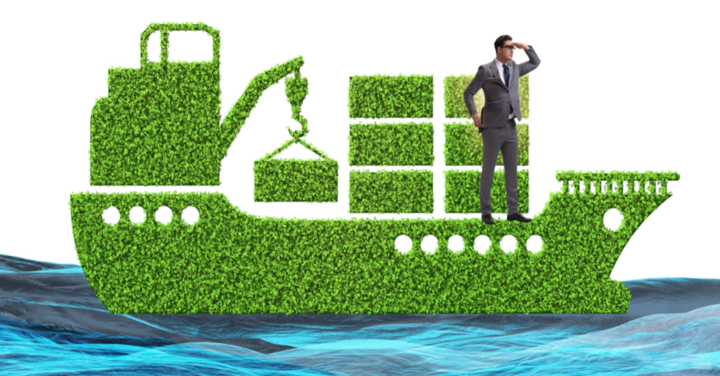
How Are CO2 Emissions Measured Through Real-Time Tracking and Why It Adds Value to Shippers
Carbon emission reduction, CO2 emission formula calculations, and cleaner shipping options are just some of the changes that have come to the freight transportation industry in the wake of ongoing disruptions, culminating in COVID shutdowns and disruptions. Demand for cargo space, capacity issues, rate concerns, and consumer demand continues to put massive pressure on supply chains. In addition, the emphasis on sustainability and ESG initiatives by shareholders and leadership further stresses the ocean freight supply chain.
As a result, supply chain professionals work to optimize the supply chain network for consistent delivery. Therefore, leaders task those same professionals with measuring CO2 emissions per freight move. As a result, greenhouse gas emissions (GHG emissions) are increasingly growing as a focus for supply chain practitioners.
Scientific projections paint a bleak future for the planet if uncontrolled- emissions continue in their current trend. For example, in March 2022, Nature reported that “following record-level declines in 2020, near-real-time data indicate that global CO2 emissions rebounded by 4.8% in 2021, reaching 34.9 GtCO2. These 2021 emissions consumed 8.7% of the remaining carbon budget for limiting anthropogenic warming to 1.5 °C.”Climate scientists have warned that the 1.5 degrees Celsius temperature threshold is necessary to reduce the most severe effects of climate change worldwide. Therefore, understanding how CO2 emissions are measured and their impact is essential for shippers and carriers today.
Tracking CO2 Emissions and Why Accurate Routing Matters
The industry is seeing more and more as shippers and consumers are looking to alike begin considering how are CO2 emissions measured and how can they be lowered effectively? This is important for those dealing with sea freight because while consumers are buying more and adding to the demand for fast and reliable shipping, they are also willing to jump to another carrier or provider over sustainability concerns.
As highlighted by the Global Trade Review’s report a few months ago, “the average price for a 40-foot container stands at US$10,374.64 as of September 16, an increase of 2.9% on the previous week and 323% higher than a year ago, according to the Drewry World Container Index, which tracks the cost of containers. It marks the 22nd consecutive week of increases.” With rates still high and capacity still tight, the pressure put on carriers to lower emissions is another pressure point to contend with, along with reigning in overall costs, fees, expenses, and financial impacts.
Maximizing Visibility Improves Shipping Services With Real-Time Tracking and Load Monitoring
Shippers and carriers are looking for an adequate answer to how CO2 emissions are measured and how to reduce emissions can benefit from real-time tracking and monitoring. Improved visibility and data collection allow shippers to have more oversight of their supply chain and emission metrics. Other benefits include:
- Better overall customer experience
- Save on insurance and vehicle upkeep
- Improved transportation services
- Effective route planning and scheduling
- Real-time scheduling adjustments
- Faster response to disruptions and delays
- Functional dock and warehouse management
- Lower chance of lost, damaged and rejected cargo
- Quick response to customer concerns
- More reliable planning and scheduling
CO2 emission formulas can easily be plugged into integrated TMS and tracking systems and allowed to monitor for changes and unexpected results, bringing benefits.
Tips for Improving Freight Transportation with Accurate CO2 Emissions Formula Tracking
Unpacking the deep and often complicated dilemma of understanding how CO2 emissions are measured gets more accessible with the right approach and plan. Shippers and green carriers can improve freight transportation and emissions tracking by following these tips:
- Create a transportation shipping protocol that fits the company’s needs and goals.
- Take advantage of data collection and analysis and make use of aggregate applications.
- Review and assess the company’s current processes regularly to look for weak points.
- Understand the impact vessels, loads, cargo, route, and timing has on emission levels.
- Implement automated tracking and monitoring systems to improve daily processes.
- Reconsider routes and modes used, considering different options for different situations.
- Analyze data and share results with team members and customers whenever possible.
Unpacking the loaded question of how CO2 emissions are measured and what those ratings mean is easier when shippers and carriers have reliable data and tracing information to base decisions and voyage planning around.
Partner With SeaRoutes to Tap Into the Power of Real-Time Ocean Freight Emissions Tracking and Monitoring
Society and company leadership are pushing for a uniform way to address how CO2 emissions are measured. Consumers are worried about the environment and shifting their habits to refocus on sustainability, clean energy, safer shipping, and environmentally friendly practices. Automated tracking and analysis of levels and real-time monitoring with proven CO2 emission formulas is easier when shippers and carriers partner with industry leaders. Contact Searoutes today to learn more and get started.